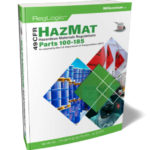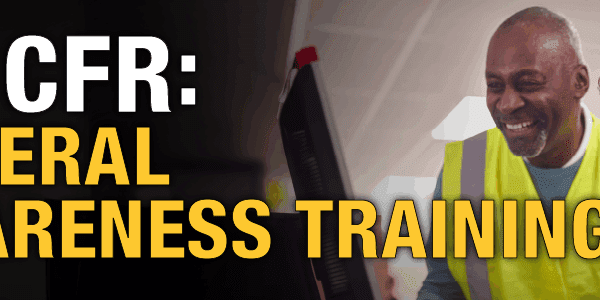
PHMSA & FRA: Notice Issued for Train Consist Rules
After the East Palestine train derailment of 2023, the U.S. Department of Transportation (DOT) created a new rule in Title 49, Code of Federal Regulations (49 CFR), regarding rail shipments of hazardous materials. This new rule, HM-263 “Hazardous Materials: FAST Act Requirements for Real-Time Train Consist Information,” requires railroads that carry hazardous materials “to generate in electronic form, maintain, and provide to first responders, emergency response officials, and law enforcement personnel, certain information regarding hazardous materials in rail transportation to enhance emergency response and investigative efforts.” This information is needed to ensure timely and accurate responses to hazardous materials incidents. It applied particularly to “Class 1” railroads, those that generate more than $250 million in annual revenue.
The main requirements of this rule were:
- Emergency notification: Upon an accident or incident, the railroad must make an emergency notification by telephone to the primary Public Safety Answering Point (PSAP) in the area. The PSAP is a designated call center that answers emergency calls, such as those made to 911.
- Electronic train consist transmission: The railroad must then transmit the train consist information electronically to the PSAP in a useable form, which will then be immediately available for emergency responders.
The “train consist” information will include hazmat identification and information useful for emergency responders, such as:
- The railroad’s designated emergency response point of contact;
- The position and contents of rail cars on the train carrying hazardous materials;
- The point of origin and destination of the train;
- Shipping paper information (UN number, proper shipping name, hazard class and packing group); and
- Specific emergency response information.
The final rule would require Class I railways to comply by June 24, 2025.
HM-263 Runs into Problems
The new rule is aimed at providing information to responders in ways that would address deficiencies noted in the investigation of the East Palestine accident. However, the Pipeline and Hazardous Materials Safety Administration (PHMSA) and the Federal Railroad Administration (FRA) have been notified that the rule may be overly ambitious with regards to implementation. Class I railroads reported that they “anticipate significant challenges in their efforts to comply with the requirements and timelines of the HM-263 … final rule.” Basically, they indicated that creating this whole new system for notification in this short timeframe would be expensive and time-consuming. It will involve employee training, revision of computer systems and the installation of physical infrastructure along the rail network, and the railways claim that the time frame allowed is just too short.
Therefore, on April 2, 2025, PHMSA and FRA have issued a “Notice of Temporary Enforcement Discretion for Real-Time Train Consist Information.” This notice indicates that “PHMSA and FRA will take no enforcement action against those particular Class I railroads related to the requirements adopted in the HM-263 final rule until June 24, 2026” – in other words, there is an effective one-year extension of the requirements for compliance.
To qualify for this extension, Class I railroads must do the following:
- Notify PHMSA that their company will be using the enforcement discretion policy in its operations;
- If they are unable to comply with the requirements of the final rule, they must maintain documentation explaining what specific requirements are not being met, the reasons why the railway cannot meet those specific requirements, and detail what other measures the railways are taking to ensure similar levels of safety; and
- Notify PHMSA no later than two months before the expiration of the current enforcement discretion period (that is, June 24, 2026) if they believe they will need any further extensions.
Conclusion
The delay to implementing HM-263 does bring into question whether we would be better able to respond if an accident similar to East Palestine happened today. However, the extension for one year may mean that railways can create a better, more planned system than one cobbled together for speed rather than effectiveness.
Do you have questions about rail shipments of hazardous materials? Our team of experts is just a call away for our customers at 855.734.5469 or send us an email, we’re happy to help.
Stay up to date and sign up for our newsletter!
We have all the products, services and training you need to ensure your staff is properly trained and informed.
 49 CFR Publications 49 CFR Publications |
 UN Approved UN ApprovedPackaging and Boxes |
 Hazard Class Labels Hazard Class Labels |
References:
U.S. Department of Transportation, Pipelines and Hazardous Materials Safety Administration (PHMSA), “Notice of Temporary Enforcement Discretion for Real-Time Train Consist Information”, https://www.phmsa.dot.gov/sites/phmsa.dot.gov/files/2025-04/PHMSA%20Notice%20of%20Enforcement%20Discretion%20-%20Real%20Time%20Train%20Consist%20Information_0.pdf
U.S. Department of Transportation, Pipelines and Hazardous Materials Safety Administration (PHMSA), “Hazardous Materials: FAST Act Requirements for Real-Time Train Consist Information”, https://www.federalregister.gov/documents/2024/06/24/2024-13474/hazardous-materials-fast-act-requirements-for-real-time-train-consist-information
Wikipedia, “East Palestine, Ohio, train derailment”, https://en.wikipedia.org/wiki/East_Palestine,_Ohio,_train_derailment





